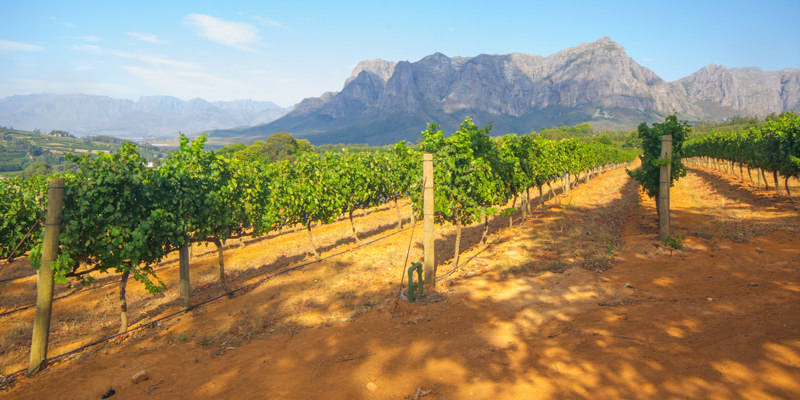We’ve all heard winemakers and salespeople proclaim certain bottles to be unique thanks to their “spectacular, high elevation” vineyard sites, but what exactly does “high elevation” mean when it comes to finished wine? Are grapes grown on Mt. Everest-like slopes magical? Is it Andes snow melt that makes Malbec ethereal?
Though the scientific evidence on snowmelt has yet to be discovered, wine marketers aren’t pulling your leg when it comes to altitude, which is a crucial and distinguishing factor in many vineyards.
Consider that on any April day, California vineyards at sea level in Amador county will be awash in 70-degree sunshine while hillside vineyards at 2,000 feet will be lucky to reach 50 degrees. Just an hour away, at elevations between 4,000 and 9,000 feet, it’s a blizzard. That 200-mile distance is a fraction of the area covered by the MetroNorth outside of New York City, but “dramatic” hardly describes the climatic differences between California’s fertile valleys and the rocky foothills of the Sierra Nevada.
In short, these mountain and hillside vineyards offer three critical contrasts to their counterparts on valley floors: more direct and concentrated sunlight, dramatic temperature shifts, and exceptional drainage. Together, these factors make vines struggle to survive, which leads them to produce fewer berries. Though lower in number, these tiny berries are the tough guys of the wine biz–full of character and reluctant to show a softer side.
As elevation increases, sunlight becomes more concentrated–as anyone who’s gotten sunburnt skiing in the Rockies can attest. The intense sun exposure in high elevation vineyards causes grapes to develop deeper pigment concentration, just like getting a tan. This phenomenon is so profound in the Andes that Argentinean wine giant Catena, has begun conducting scientific studies on the effect of this intense, concentrated light on plants. The “tan” that high altitude grapes receive comes in the form of a thick, tough grape skin which contributes vivid color and strong tannin, essential for making a wine age worthy.
That weathered skin also protects grapes from the aforementioned dramatic climate shifts that affect high altitude vineyards, like those across Spain’s Ribera del Duero region. While searing hot temperatures characterize dry days, night temperatures plummet, often reaching the low 50s throughout the summer. These powerful, diurnal shifts force grapes to ripen slowly, since a drop in temperature halts sugar production. Their flatland counterparts, on the other hand, continue to ripen during warm nights in the valleys. The combination of intense sunlight, and cold nights means grapes have adequate heat to produce legions of flavor-inducing sugars, but not so much that they don’t develop acids and other chemical complexities essential to fine wines.
Finally, the drainage of lofty vineyard sites is fantastic. Rocky soils whisk rainfall away from grape roots, forcing the vine to grow deep into the earth–upwards of 40 feet in some mountainous Napa subregions like Atlas Peak–to search for water and nutrients. Skeptical? Just try digging a hole on a scraggly mountaintop if you think the soil is nutritious. The constant battle for nutrients in high elevation sites means the vine is forced to divert energy from grape production to simple survival, reducing the overall yield of the vine. Grapevines grown in fertile valleys with lots of topsoil can focus solely on fruit production, and often have roots that go only a few feet into the soil. Like growing up poor but resourceful, these low-yielding vines give each surviving berry more character and higher quality.
The combination of low soil nutrients, wild temperature variation, and fierce sunlight alter the growing season, giving towering vineyards a later spring bloom and earlier harvest period. By adapting and differentiating with darker skins, incredible structure, and shockingly bright acid, their fruit forms the basis for wines that fantastically express their individual terroir. Together, the obstacles elevation creates for agriculture forces these grapevines not to work harder, but to work smarter.
Taste it:
- Turley Wine Cellars Rattlesnake Ridge 2014 Zinfandel, Howell Mountain, California (Elevation: 2,600’)
- Bodegas Cepa 21 Hito 2011, Ribera del Duero, Spain (Elevation: 2250-2550’)
- Achaval Ferrer Finca Altamira 2012 Malbec, Mendoza, Argentina (Elevation: 3,444’)

